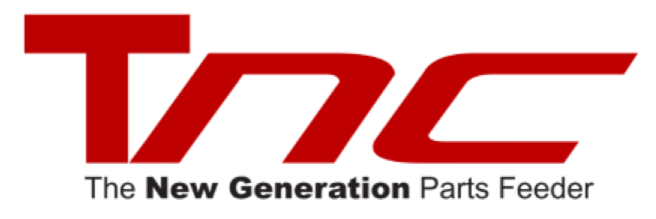Introduction: Why Rotary Feeder Maintenance Matters
Picture this: It’s the middle of your production shift when suddenly, your rotary feeder jams. The conveyor line grinds to a halt. Workers stand idle while your maintenance team scrambles to diagnose the problem. Meanwhile, the clock is ticking on your production deadlines and profitability.
This scenario is all too common in factories and processing plants all across the globe, not just Malaysia. Rotary feeders are workhorses in industries ranging from semiconductor to food industry. Designed for continuous operation, they endure demanding conditions—including the handling of abrasive materials with reliability.
The truth is, most rotary feeder failures don’t happen suddenly. They’re the result of accumulated wear and tear that could have been prevented with proper maintenance. In this comprehensive guide, we’ll walk you through everything you need to know to:
- Understand how rotary feeders work and why they’re critical to your operations
- Implement a proactive maintenance program tailored to Malaysia’s conditions
- Spot early warning signs of potential problems
- Choose the right replacement parts and lubricants
- Train your team on proper handling techniques
- Decide when it’s time to repair versus replace your equipment
Whether you’re a plant manager looking to optimize operations or a maintenance technician seeking practical solutions, this guide will give you actionable strategies to extend your rotary feeder’s lifespan and avoid costly downtime.
Understanding Rotary Feeders: How They Work and Why They Fail
Before diving into maintenance, it’s important to understand what makes rotary feeders tick – and what makes them break down.
Basic Components and Operation
A typical rotary feeder consists of:
- Housing: The outer shell that contains the rotating mechanism
- Rotor: The rotating assembly with multiple blades or vanes
- Bearings: Support the rotor shaft and allow smooth rotation
- Seals: Prevent air leakage and material escape
- Drive mechanism: Usually an electric motor with gear reducer
The feeder works by:
- Receiving material from the inlet
- Rotating to transport material between vanes
- Discharging material at the outlet
- Maintaining an airlock to prevent pressure loss
Common Failure Points in Malaysian Operations
Based on service reports from Malaysian industries, these are the most frequent issues:
- Bearing Failure: Dust ingress and poor lubrication lead to premature wear
- Material Buildup: Sticky or moist materials accumulate inside the housing
The Cost of Neglect: Why Maintenance Pays Off
Consider these statistics from Malaysian industrial plants:
- Properly maintained rotary feeders last 5-7 years versus 2-3 years without maintenance
- Unplanned downtime costs average RM5,000-RM20,000 per hour in lost production
- Energy consumption increases by 15-20% with worn components
- Emergency repairs cost 3-5 times more than scheduled maintenance
Comprehensive Maintenance Checklist for Malaysian Conditions
Now let’s get into the practical maintenance strategies that will keep your rotary feeder operating at peak efficiency.
Daily Maintenance Tasks
- Visual Inspection (5 minutes)
- Check for unusual noises or vibrations
- Look for material leaks around seals
- Monitor motor temperature by hand
- Lubrication Check (3 minutes)
- Verify oil levels in gear reducers
- Check grease fittings for proper lubrication
- Operational Check (2 minutes)
- Confirm smooth rotation
- Ensure proper material flow
Weekly Maintenance Procedures
- Thorough Cleaning
- Remove material buildup from housing interior
- Clean vent filters (if equipped)
- Clear any blockages in inlet/outlet
- Seal Inspection
- Check for wear on shaft seals
- Verify gasket integrity
- Look for signs of air leakage
- Bearing Check
- Listen for unusual noises
- Feel for excessive heat
- Check for smooth rotation
Monthly Maintenance Activities
- Detailed Component Inspection
- Measure rotor blade clearance (should be 0.1-0.3mm)
- Check rotor shaft alignment
- Inspect drive chain/belt tension
- Lubrication Service
- Change gear oil (if applicable)
- Replenish grease in bearings
- Clean and relubricate drive components
- Performance Testing
- Measure amperage draw (compare to baseline)
- Check material flow rate
- Verify airlock effectiveness
Special Considerations for Malaysia’s Climate
Malaysia’s tropical environment presents unique challenges that require special attention:
Environment Management
- Use desiccant breathers on gearboxes
- Store spare seals in climate-controlled areas
- Consider using a cleanroom to prevent dusty & oily environments
Temperature Management
- Allow for thermal expansion in metal parts
- Monitor motor temperatures more frequently
- Consider heat-resistant lubricants
Material-Specific Issues
- For hygroscopic materials: add vibrators or air sweeps
- For sticky materials: install cleanout doors
- For abrasive materials: use hardened blade coatings
When to Repair vs. Replace
Knowing when to fix versus replace is crucial for cost-effective maintenance:
Repair When:
- Motors, bearings, gears go through wear & tear
Replace When:
- Motors and bearings are not functioning
Conclusion: Building a Sustainable Maintenance Culture
Effective rotary feeder maintenance isn’t just about following a checklist – it’s about creating a culture of proactive equipment care. By implementing these practices:
- Train Your Team: Ensure everyone understands the importance of maintenance
- Keep Good Records: Track all inspections and repairs
- Partner with Experts: Work with reputable rotary feeder suppliers in Malaysia
- Invest in Quality: Choose equipment designed for Malaysian conditions
- Stay Proactive: Address small issues before they become big problems
Remember, the few minutes you spend on maintenance today can save you days of downtime tomorrow. With proper care, your rotary feeder will deliver reliable performance year after year, keeping your operations running smoothly and profitably.
For more information on rotary feeder maintenance or to consult with our rotary feeder experts at TNC Technology about your specific application, contact us today!
🔗Contact Us | 📧 Email: [email protected]
Your Components, Our Solutions — You Name It, We Build It.




Pingback: Feeder Machine Integration for Streamlined Production in Malaysia - TNC